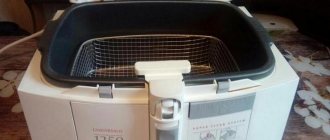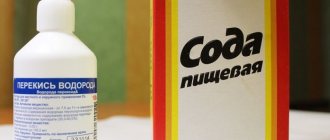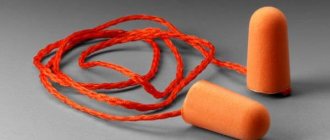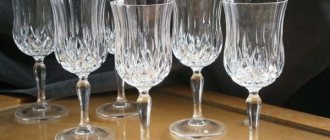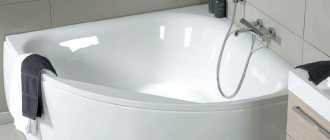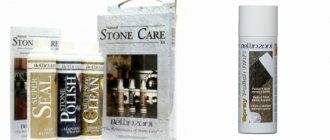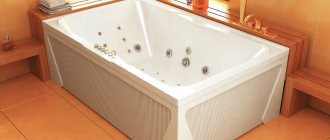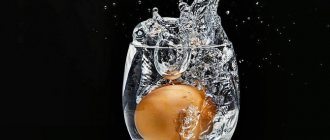How to clean kitchen facades made of painted MDF
The hit of the last season were bright kitchens made of painted MDF boards. Whatever style your kitchen space is decorated in - classic, avant-garde, Scandinavian, rustic or loft, painted MDF facades
will organically fit into the interior and stylishly complement the room. By going to the page, you can see various options for kitchens with MDF facades in popular modern interiors.
However, a presentable appearance is not the only advantage of an MDF kitchen.
. Kitchen sets have a special coating that gives the furniture useful properties, including the following:
· Preservation of shape and color regardless of temperature fluctuations and humidity levels;
· No accumulation of traces of dirt, grease and unpleasant odors on surfaces;
Read more about the benefits of a custom-made kitchen in Kiev
from painted MDF, read this article.
We take care of painted MDF facades
Surely, every owner would like to keep his furniture in its original form. In order for a custom-made kitchen
made of painted MDF
to retain its aesthetic characteristics longer, regular maintenance of the furniture is required.
Next, we will tell you how to clean the kitchen in the best way without damaging the facades:
· The basic rule is to keep the furniture set dry. If the surface gets wet, wipe it with a soft cloth. Do not expose facades to aggressive liquids (acids), hot drops of fat or water;
· Kitchen to order
painted in bright shades, should not be located opposite the windows, so that sunlight does not lead to rapid fading of glossy facades;
· Fresh dirt can be easily removed using a piece of soft cloth and liquid cleaning agents that do not contain abrasives or aggressive substances. The use of excessively strong chemical solutions can lead to the formation of stains on surfaces, as well as removing the shine of glossy facades. It will be more difficult to get rid of such problems. When choosing a cleanser, pay attention to its composition. The presence of the following components can damage the facades:
It is also prohibited to clean painted MDF facades with concentrated solutions.
· Polishing the facades restores the shine of surfaces, making the kitchen
looks like new.
For polishing, it is better to use a piece of natural fabric. Chemical polishes, as well as wax or paste, can lead to the opposite effect - kitchen furniture from the manufacturer
will lose its glossy shine.
· Manufacturers of modern steam cleaners recommend using them for washing kitchen furniture. However, high-temperature steam, which is supplied to facades under high pressure, can damage the surface and lead to the formation of delamination of the top layer of the facade.
· Avoid using hard sponges and brushes, which can scratch furniture. It is better to use fabric rags.
How to restore shine to glossy surfaces?
Many housewives complain about the presence of noticeable fingerprints left in the kitchen by children or other family members. How to get rid of such stains and restore the shine to facades?
1) Regular rubbing of facades using gentle detergents (dishwashing liquid or glass cleaner, shower gel, shampoo, liquid soap);
2) For polishing, it is allowed to use a polish that does not contain wax, as well as a microfiber cloth;
3) Feel free to use a degreasing gel, which is applied to the surface of the furniture with a damp microfiber cloth;
4) Treat facades with antistatic agents that prevent microparticles of dust and dirt from settling on surfaces;
5) When washing facades, try to use as little water as possible, and carefully wring out excess moisture from rags.
The household chemicals market offers a line of products designed specifically for cleaning glossy and matte MDF facades. Such solutions can reduce the number of marks from greasy stains and fingers on MDF facades. You should pay attention to detergents that create an invisible crystal-like film on the kitchen surface. The protective film lasts on furniture for 6 to 12 months and prevents the appearance of greasy stains and traces of dirt.
Please note that it is very difficult to choose a universal cleaning product for the entire kitchen. Only through experimentation will each housewife be able to choose exactly those cleaning and protective products that will allow her to maintain a presentable appearance of the kitchen according to an individual project
.
How to wash MDF kitchen furniture
When washing kitchen furniture, you need to wear gloves.
First, you need to determine what material the furniture surfaces are made of, since MDF requires a different treatment when cleaning than plastic.
There are a number of general rules that will help clean kitchen furniture made of MDF with a glossy finish, even from stubborn stains:
- Use only suitable equipment.
- Choose the right kitchen cleaning products.
- Try a new cleaning product on an inconspicuous area of the coating.
- Follow the instructions on the detergent packaging exactly.
- Use rubber gloves.
After removing contaminants, you need to thoroughly rinse off the detergents with warm or cool water. Then wipe clean surfaces dry. This will help prevent streaks and maintain gloss.
Following simple recommendations will make home cleaning effective and safe, and will help keep your furniture looking beautiful for a long time.
General recommendations
- The most important rule is: ALWAYS test the cleaner on an inconspicuous area before cleaning your kitchen. Treat it, then wipe clean and dry, wait 1-2 minutes and evaluate whether the color of the coating has changed, whether the shine has disappeared, etc.
- A greasy coating on kitchen furniture is a mixture of dust with fumes and a tiny suspension of fat that forms during cooking. The older the plaque, the more difficult it is to get rid of it. Therefore, the optimal schedule for “general” cleaning of the kitchen from grease is 1-2 times a year, “major” cleaning is every 2 months using mild products and, of course, when the need arises.
- To clean hard-to-reach areas, crevices, or decorative trim, use a toothbrush dipped in the cleaner from our article. You can also clean narrow crevices with a knife wrapped in cloth.
- Do not use harsh abrasives; only baking soda, a soft toothbrush, or the hard side of a regular foam sponge are acceptable. This is especially true for wooden kitchens, as well as any painted furniture without a top protective coating.
- When cleaning the kitchen, it is better to use a new sponge with a clean abrasive side. An old, greasy sponge can do even more damage.
- At the end of cleaning, it is advisable to wipe the kitchen: clean with a damp microfiber cloth and dry with a clean, dry microfiber cloth. This way you will avoid streaks and residues of the cleaning product itself.
- When cleaning the kitchen, pay special attention to the cabinets above the stove.
And now some special recommendations and warnings.
| For a wooden kitchen (painted with stain, enamel or other types of paint, unpainted but treated with oil/wax/polish/special impregnations/matte varnish, etc. | For all other kitchens: glossy, varnished, plastic, laminated and painted MDF and chipboard sets |
| A wooden kitchen requires the most delicate care. Most “folk” remedies like peroxide, ammonia, alcohol or citric acid are contraindicated for it, as well as ordinary alkali-based household chemicals. | Whether you use expensive or cheap household chemicals, the main thing is that it contains alkali. It is the one that most effectively copes with grease and dirt. |
| Manufacturers of wooden kitchens recommend washing facades only with special products with neutral Ph or a solution of warm water and soap (dishwashing detergent), diluted in a ratio of 5:95. But what if the Fairy solution does not remove old fat and stubborn stains? Ideally, thorough cleaning of the kitchen should be entrusted to special cleaning services, especially if the kitchen is relatively new, with expensive finishes. Our recipes are in most cases safe for wood, but there is still some risk in them. | It is convenient to use a spray bottle to clean the kitchen. |
| When wiping the kitchen, try to move along the grain of the wood, and not against or across. This will allow you to better clean the pores of the material and act more delicately on the fibers. | Before applying cleaning agent to the contaminated area, moisten it, for example, using a spray bottle. Moisture will speed up the chemical process somewhat. reaction and will make cleaning easier. |
| The rag should not be too wet. Excess moisture is harmful to wooden surfaces. | |
| After washing and cleaning wooden furniture, do not forget to treat it with protective wax, oil or polish. |
The main reasons for contamination of MDF kitchen units
If you do not wash off the grease from MDF furniture immediately, it will eat into the surface.
During frying, even a very careful housewife will inevitably become covered with a greasy coating or splashes on the walls and cabinets around the stove. It is not always possible to scrub kitchen surfaces immediately. Dust from the air quickly sticks to them, forming dense, ingrained dirt that becomes difficult to wash off.
Unpleasant marks, especially on light-colored furniture, are also left by:
- tea leaves or coffee;
- red wine;
- beet or tomato juice;
- turmeric;
- limescale from water;
- tobacco smoke.
These stains, when quickly detected, can be easily washed off with plain water. But if you waste time, they will eat into the surface and will be difficult to remove.
You need to wash your MDF kitchen set correctly so as not to spoil the coating and restore it to its original shine and cleanliness.
Method 1. Express cleaning and polishing for advanced cases (soda + vegetable oil)
PURPOSE: wooden UNpainted kitchens and countertops (coated with matte varnish, oil, wax, polish, any impregnations), varnished and laminated kitchens made of MDF and chipboard, aprons made of any materials.
This recipe is especially helpful if you need to bring an old kitchen or countertop back to life with minimal time and money.
- With its help, you can, firstly, easily remove tightly adhered drops of fat, plaque and stains. Secondly, to “seal” the pores of the wood, protecting it from moisture and dirt. And thirdly, to give the facades a natural shine and brightness. Essentially, this old homemade recipe replaces both cleaner and furniture polish.
CAUTION: Painted wood kitchens and light wood kitchens (oil may yellow slightly).
CLEANING FREQUENCY: It is important that cleaning with soda-oil cleaner is carried out regularly - at least every 2 months. The fact is that oil tends to oxidize and lose its protective properties, possibly changing color.
Universal gentle products for the care of kitchen furniture
Of course, you have to wash the kitchen regularly, so housewives have always chosen the most gentle means to ensure that the furniture lasts for a long time. During the existence of wooden modular and modern sets, many methods have been tried.
A glossy facade like the one in the photo can be easily scratched.
They tried to wash the previously common white sets with soda and mustard. Today, baking soda is not suitable for use on MDF cabinets as it is a fairly harsh abrasive. And you can make a paste from mustard to remove fat. To do this, mix mustard with water to obtain a paste. Apply the mixture to the stains and wash off after a while with warm water, without making any effort so as not to scratch the facades.
Among the folk remedies, there are other ways to care for a modular kitchen and conventional furniture:
- You can wash glossy white and any other facades with vodka or alcohol, diluting it 1:1 with water;
- 1 tbsp. l. Dilute ammonia in a liter of water and spray on contaminated surfaces, leave for a few minutes, and then wipe. But this product should be used carefully on glossy surfaces, because streaks may remain;
- If you mix lemon zest (or its juice) with vinegar and a small amount of alcohol, you get an effective grease remover that will not harm even an inexpensive modular glossy kitchen. This composition can also be used to wash white surfaces.
As you can see in the photo, there are a lot of products, but many are very similar in composition.
Although any modular kitchen, not just a white, glossy kitchen, is somewhat difficult to maintain, the facades can be kept clean using regular or apple cider vinegar mixed with vodka. This solution can be used to regularly wipe surfaces, and dirt will not have time to accumulate on them. And the kitchen will shine like new.
Method 3. Universal recipe for deep and thorough cleaning (6% vinegar + isopropyl alcohol)
PURPOSE: For general cleaning of old grease and other complex stains of painted and unpainted wooden kitchens, laminated, varnished, plastic glossy facades made of MDF and chipboard, all types of countertops and aprons.
CLEANING FREQUENCY: 1-2 times a year.
Step 1. Mix 6% vinegar with rubbing alcohol (isopropyl) alcohol in a 7:1 ratio and add a few drops of liquid soap to the solution.
Rubbing isopropyl alcohol can be purchased at outlets that sell printer supplies, companies that sell fiber optics, and specialty online stores. You should not experiment with other types of alcohol.
Step 2: Wipe the cabinets with the mixture using a microfiber cloth.
Step 3: Now wipe the kitchen clean with a cloth soaked in warm water.
Step 4. Finally, rub a special wood furniture oil that contains beeswax into all surfaces. This action will “seal” the pores and protect your kitchen from stains, dirt, moisture and grease for a long time.
The best remedy for dirt and grease on kitchen facades is regular maintenance
Regardless of the characteristics of the finishing of MDF facades, any of them cannot withstand frequent washing with aggressive preparations: the appearance deteriorates; Moisture and even more grease get into scratches and damage. As a result, the facades of the set lose their luster, gradually deteriorating and subsequently requiring repair or replacement.
Experienced housewives have long concluded that there is no better product than regular dishwashing detergent.
To wash the facades of kitchen furniture with dishwashing detergent, it should be diluted a little in water, obtaining enough foam for a soft surface treatment. This method is applicable to any coating, since it does not destroy the material or scratch it.
You can use the usual detergent for any kitchen quite often, so it is better to wash contaminated surfaces immediately after preparing food.
In order to clean furniture from frozen drops of grease, you first need to apply foam to the contaminated areas of the facades for a while, and then, preferably with the hard side of a new sponge, wash the kitchen. If the doors of the set are covered with gloss, then you should not put much effort into pressing the sponge on the surface - even it may leave barely noticeable scratches. But matte furniture should be washed just as carefully.
The photo shows cleaning matte facades. We recommend wearing rubber gloves when washing the headset.
If the set is not washed at all for a long time, then the layer of dirt and grease will be difficult to remove with a simple product. To care for kitchen furniture in this case, you will have to purchase special household chemicals, but you need to choose pastes or gels, the composition of which is applicable for each specific type of facade.
Most often, the difficulty is in maintaining a modular kitchen, since the space between the individual elements quickly becomes dirty. But the solution will be special linings at the joints, which will prevent grease and moisture from getting between the two adjacent parts of the modular set.
Matte kitchen
Many apartment dwellers prefer to decorate their kitchens in matte colors. This design method is most often chosen by those who value comfort and family warmth. The muted shade of furniture facades enhances the feeling of comfort, especially in the winter cold. Matte finish is the only possible option for decorating rooms in the styles of Provence, country, shabby chic, etc.
How to wash kitchen facades?
Keeping the house clean is an important issue for any housewife. And the kitchen, as you know, is a place that gets dirty very quickly. What do you first notice when entering a kitchen? Undoubtedly, these are facades. They are the ones that get dirty the fastest: greasy stains, fingerprints, drops and stains - of course, this does not add visual beauty. Therefore, it is very important not only to know how to wash kitchen facades, but also to do it in such a way as not to scratch or damage the coating. There are different types of facades, each of which requires proper care.
P plastic
Utensils with a plastic coating are very easy to manufacture - a sheet of plastic is glued to the front part, such a coating is inexpensive and impermeable to liquids. Plastic is not susceptible to soaking and remains durable for a long period. The disadvantage is that such kitchen sets quickly fade and fade in the sun. Therefore, it is worth paying special attention to what you use to wash plastic kitchen facades. Before applying the product to all elements of the headset, test it on a small piece that is invisible. It is advisable to use creams whose label indicates that they are suitable for plastic coatings. You cannot use hard brushes and abrasive sponges, they can damage the coating, and it will be impossible to fix it. Soft-lined rags and professional detergents are suitable for cleaning.
PVC film
Another type of covering for the façade part of the headset is a PVC film, which is glued using a press. The headsets are quite inexpensive in cost, and the film coating is resistant to various damages and retains color for a long time. But there is one nuance that should be taken into account when choosing a method for cleaning such facades - the film can peel off at high humidity. How to wash film-coated kitchen facades? We answer: you can use a solution based on soap concentrate or glass cleaner, the main thing is to carefully wring out the rag to avoid drops of water getting inside the facade.
Dye
A very common material for making facades is MDF. To create MDF boards, the method of dry pressing of small wood chips at high temperatures is used. Such slabs are coated with paint on top and then with 2-3 layers of special protective varnish. Such a coating requires special care - when cleaning painted MDF facades, non-abrasive agents and sponges are used, the best option is a microfiber cloth and a mild soap-based product; it is permissible to use glass cleaners diluted with water. After the surface of the facade is cleaned, it must be wiped dry with a towel to avoid streaks.
And krill
MDF boards are not only painted, but also coated with acrylic. Such facades are very easy to use and daily care. The most important thing is not to use aggressive detergents, so as not to deprive the surface of its glossy shine. Suitable cleaning products: soap solution, glass cleaner, mild detergents. Sponges should also be purchased without a hard coating.
How to wash kitchen facades using home remedies?
If you don’t have professional cleaning products on hand, the following recipes will help give your kitchen a pristine look. Also, the tips listed below are suitable for housewives who suffer from allergic reactions to components of household chemicals.
Before you start washing kitchen facades, prepare everything you need:
– ingredients for preparing the cleansing mixture; – non-abrasive sponges, soft flannel or microfiber choppers; – dry, lint-free rags; - latex gloves.
With water and soap
A mixture of soda and laundry soap will not only help clean kitchen facades, but will also disinfect them. Soda is not used for glossy facades - small particles can scratch the surface.
Preparation is very simple:
1. Grate the laundry soap on a coarse grater and add a little water until smooth. Treat all facades with this mixture. 2. Pour baking soda onto a soft sponge and gently wipe each façade, shelves, countertop and wall panel. 3. Leave this mixture to act for 15-20 minutes, and then wash everything thoroughly with clean water.
With oda and oil
Oda can also be used with vegetable oil; this mixture will help wash off old stains and greasy facades, and is suitable for cutlery and dishes. Soda should be mixed with vegetable oil in a 2:1 ratio, then applied to contaminated areas and wiped with a soft cloth. Leave the mixture for 20 minutes, then wipe with a clean cloth.
Ammonia alcohol
How to wash kitchen facades if conventional products do not help? A popular remedy among housewives - ammonia - comes to the rescue. Remember that you need to open the window when working with this substance, because ammonia has a very pungent odor.
1. Dissolve 1 tbsp. ammonia in 1 liter of clean water. 2. Treat the facades with the resulting solution using a sponge. It is very convenient to spray liquid from a spray bottle. 3. Then wipe the cabinets with a damp cloth.
Mustard powder
Mustard powder is also great for cleaning facades from grease, plaque and other contaminants. But it is not at all applicable to wooden kitchens - read more about the care of solid wood facades. 1. First you need to wipe the facades with a damp sponge. 2. Then apply mustard powder to the greasy areas and leave for a few minutes to act. 3. Wipe the surface of the facades with a clean napkin; dirt and grease will go away along with the powder.
Behind the kitchen facades
To maintain the radiant appearance of the set for a long time, you need not only to determine what to wash the kitchen facades with, but also to take care of the product on an ongoing basis, then the kitchen will delight you for many years.
In this case, the following rules are adhered to:
– after cleaning, you need to thoroughly wipe the facades with a dry cloth, then water will not get inside the facade;
– if possible, it is better to position the set so that it is not exposed to direct sunlight, so the bright color of the facades will last longer;
– it is recommended to dilute any detergent with a small amount of water, and first try it on an inconspicuous part of the facade;
– do not use powders with abrasive particles for cleaning – they leave scratches;
– aggressive detergents leave cloudy stains – few people know about this.
Source: www.kitchenonline.ru
Advantages and disadvantages
One of the questions that arises when buying a new kitchen set is the choice between muted and glossy facades. Both options have their adherents. The final preference should be based on the correspondence between the appearance of the headset and the developed design concept. It is also important to initially consider the pros and cons of different surfaces. Sometimes, to realize certain benefits, you need to create certain conditions. You should also not underestimate the disadvantages of a particular type of finish. Before making a final decision, it is advisable to analyze all the features of the room being decorated.
The list of advantages of matte kitchens is as follows:
- such facades are practical and do not require frequent hygiene procedures. Muted tones allow you to clean less frequently than with shiny glossy surfaces;
- have a positive effect on the emotional background - a calm, soft finish calms the nervous system. Matte kitchens promote peace and create a quiet, relaxed environment;
- muted tones make it easy to implement designs in classic and rustic styles;
- Matte facades are better able to withstand direct sunlight. Such surfaces practically do not fade. The slight loss of color that occurs during long-term use is not noticeable;
- Light matte tones promote an active positive attitude. Starting the morning with a cup of tea or coffee in such a kitchen means providing yourself with a boost of energy for the whole day;
- The stores provide a wide selection of base materials. Matte surfaces can be made of chipboard, MDF, natural wood, plastic, acrylic. There are headsets with enameled surfaces;
- the physical properties of muted tones make it possible not to worry about the strict organization of lighting. Such facades will not glare under any conditions.
Gentle kitchen cleaning products: TOP 5 effective compositions for MDF
To keep furniture clean, there is no need to clean it or scrub it with a scraper.
You can clean kitchen facades using homemade recipes without store-bought chemicals:
- An effective remedy is vodka . Instead, you can dilute alcohol one to one with water. This liquid can be used to wipe the doors of any set. This way you can wash white, glossy, or any other surfaces.
- Ammonia is good at removing grease and other contaminants . One tablespoon per liter of water is enough to wipe away any dirt in the kitchen. The liquid needs to be sprayed, and after a few minutes wiped off and that’s it. But the gloss may leave streaks, so it’s best to try wiping an inconspicuous area first.
In a kitchen made of MDF with glossy facades, the use of products with abrasives is unacceptable.
- A mixture of vinegar, lemon juice and alcohol washes away grease well . At the same time, the solution is safe for any facades: it can be used to wash white, glossy doors.
- A similar composition is vodka with apple cider vinegar . This solution will help protect surfaces from grease, and they will always shine as if it were a new kitchen.
- Another proven method is hot steam, especially for modular headsets . Not only a steam cleaner will do, but also a regular iron with vertical steam.
important! This method is not suitable for all variants of MDF facades, so it is worth checking in an inconspicuous area. For example, the film may move away from the base due to steam shock.
Soda, which is effective against many stains, is not applicable in the case of MDF - it severely scratches the surface. But mustard, which was previously mixed with soda to wash away congealed dirt, is suitable for preparing a thick paste. Apply this mixture to stains or the entire surface, and after a while wash off with clean water. Of course, you should not experiment with white furniture - mustard may turn it yellow.
It is recommended to wash painted MDF facades only with soapy water and a soft sponge. If you can’t remove the grease, try more effective products on an inconspicuous area of the furniture.
Color palette
The tonal range of matte kitchens is somewhat narrower than that of glossy ones. Nevertheless, among them you can find most of the most popular representatives of the spectrum. When choosing colors for your future kitchen, you should take into account the size of the room, the direction of the window openings, and the general stylistic concept. Options for combined sets with multi-colored upper and lower facades are possible.
Dark matte surfaces are absolutely unacceptable for a small kitchen. Such a room will resemble a closet. Also, do not use variegated colors - a modest room will look too overloaded with details. The best option is delicate white tones. Elegant sets of creamy, milky, pearl shades will look very good. An excellent option is a light beige matte tone in combination with white surfaces. Such kitchens look very nice and quite modern.
For large and medium-sized rooms, designers recommend combining matte white and black tones. Contrasting elements look very fashionable and also balance out the visual impact. White color is universal. It is readily used for finishing rooms in any style. This tone has many warm variations and goes well with other representatives of the spectrum.
Natural wood shades are widely used to decorate kitchens in classic or country style. It can be wenge, beige, coffee, chocolate, brown. In a matte finish, such rooms look very respectable. Delicate cuisines in blue, blue, lilac, lavender, pale green, pink, pistachio, and yellow colors are very popular. This palette with muted light reflection is an ideal way to decorate a room in the Provence style. This direction requires a background that looks slightly faded under bright sunlight. Colorful and glossy splashes are necessary accessories to create the atmosphere of the French province.
To decorate a spacious kitchen, you can use black matte furniture. Due to this, a large room will look very stylish and original. However, black furniture is more difficult to care for. Even on matte surfaces, traces of kitchen dirt and hand touches will be clearly visible. Black furniture will have to be carefully looked after. Neglecting hygiene procedures will not allow you to enjoy the stylish appearance of your kitchen for a long time. If the owners understand that they will not be able to clean often enough, they should prefer more practical colors.
Safe products and tools
When trying to clean an MDF kitchen set, even from old plaque, you should not use abrasive or aggressive substances. They will damage the delicate surface. The following tools are prohibited for cleaning:
- hard brushes;
- metal scourers;
- sponges made of hard material;
- hard scrapers;
- rough rags.
Compliance with this rule will help prevent the appearance of scratches and roughness, which will irrevocably spoil the appearance of glossy facades.
It is better to use an old rag or soft washcloth. Positively proven in gentle cleaning:
- microfiber products;
- silicone scrapers;
- melamine sponge;
- paper towels;
- cotton swabs and disks.
A careful approach to choosing tools for washing and removing dirt will eliminate unpleasant consequences and preserve the beauty and newness of the cabinets.
Safe chemicals for washing MDF furniture
To begin with, you can try to remove dirt with products that you already have in your household: dishwashing gel or glass cleaning composition. Impregnated wet wipes or liquid and laundry soap are also suitable. If this does not help, move on to using stronger household chemicals.
To understand the assortment presented on store shelves, you need to carefully read the composition on the labels. It is strictly forbidden to use the following for cleaning MDF surfaces:
- concentrated solvents;
- alcohol-containing liquids;
- cleaning abrasive powders;
- solutions with a high content of acids and alkalis.
The most effective and safe for people are: Mr. Muscle, Cillit Bang, Shumanit, etc. All of them are tested during production, so they have minimal impact on health.
A liquid or creamy detergent structure is preferable as it does not contain hard, scratchy particles.
Folk remedies for removing grease in the kitchen
In order to avoid allergies to chemicals, you can try to wash MDF kitchen facades using environmentally friendly methods. Traditional cleansing recipes are economical and time-tested, so it’s worth trying to use them in everyday cleaning.
The most effective formulations:
- mustard powder with water until a creamy slurry forms. Cover the problem area for 10-15 minutes. Then remove with a paper towel and rinse with warm water. Mustard will dissolve fat well. Use with caution on varnish and glossy surfaces.
- ammonia with water in a ratio of 1 to 100. Pour the resulting solution into a spray bottle and spray all contaminated areas. Do not rinse, wipe dry with a soft cloth. Universal cleaning liquid, ideal for almost all surfaces.
- vinegar and lemon juice with vodka in equal proportions, add grated zest to enhance the aroma. This option is suitable for removing medium dirt from glossy white coatings. Helps get rid of mild lime deposits from hard water. Refreshes the air in the room, also eliminating unpleasant odors.
- Grate the laundry soap Place the resulting slurry on the greasy stain, gently rub with a sponge, and leave to dissolve for 20 minutes. After this, rinse thoroughly with warm water. This method has proven itself positively on matte facades.
- baking soda and hydrogen peroxide to the consistency of thick sour cream. Apply to the treated area and allow to dry completely. Then remove with a soft brush, then wipe with a damp cloth. Has an antibacterial effect. Fights mold.
Do not intensively rub kitchen surfaces or use sharp objects when removing plaque, so as not to cause mechanical damage to glossy and varnished coatings.
How to care for a matte surface
To keep your kitchen looking fresh and attractive longer, you need to keep it clean. The rules for caring for matte surfaces directly depend on the base material. There are also several general recommendations, following which you can extend the life of your kitchen set. The list of the most important tips for caring for matte facades is as follows:
- Do not use abrasive or alcohol-containing detergents. The former contribute to the appearance of visible defects; thanks to the latter, the color of surfaces noticeably fades;
- Do not use sponges and brushes. These tools are too rough for matte panels. Furniture should be washed with soft cloths or microfiber products. Some housewives successfully use paper towels and napkins;
- if we are talking about a matte set made of natural wood, you can use a steam generator to care for it;
- Despite the practicality of muted tones, you should not make the room too busy. Some base materials have a porous structure and are well saturated with fat and food coloring. It will be very difficult to remove such stains without damaging the furniture;
- After cleaning, all washed surfaces should be wiped dry. This simple action will extend the life of the base material of the matte headset.
How to clean grease from kitchen utensils at home
Keeping the kitchen clean is one of the main tasks of housewives, so the question of how to clean grease from kitchen furniture at home is always relevant. Home and professional remedies will help clean surfaces and restore their freshness. However, in order not to damage the headset, it is important to know what material it is made of and take into account the features of caring for it.
The article contains useful tips and effective methods that will help remove grease from glossy, plastic and wooden furniture in the kitchen.
Reviews
I have always dreamed of decorating my kitchen in Provence style. After moving into our own apartment, my husband and I chose a very beautiful set with matte pistachio-colored facades. In our kitchen of 21 sq. m it fit perfectly. The room does not look too big due to the dark panels and lack of glare. I really loved my new kitchen. Glossy facades will never make a room as cozy and warm as matte ones.
Natalya, 37 years old
In the rented apartment where I live, the entire kitchen is done in muted colors. This is very convenient because small scratches are invisible on furniture panels. In addition, I am not a fan of daily cleaning, and the matte surface, due to its light reflection properties, better hides small dirt.
Summarizing
A kitchen set should always be pleasing to the eye; unfortunately, grease and other traditional kitchen contaminants can quickly deprive the set of its attractiveness. But you can easily cope with this problem - just don’t run the kitchen and regularly clean the kitchen furniture.
The video in this article shows a couple of tricks for cleaning kitchen fronts.
In the comments, you can share your recipes for cleaning kitchen furniture.
Source: kursremonta.ru
Paper towels
The best solution for absolutely any surface is a clean paper towel. It cannot harm any objects, with extremely rare exceptions.
How to use:
- Prepare one towel.
- Moisten it with warm water.
- Wipe every contaminated area.
If you need to remove a fresh stain of grease or other dirt, then this is an ideal option that will instantly solve the problem.
Soap, soda
You can remove grease from most surfaces yourself using baking soda and soap. This is an ideal option for household appliances and dishes.
How to clean:
- Rub the soap into small pieces and add a small amount of water.
- Blot the sponge and wipe off all the dirt.
- Pour baking soda onto a sponge and wipe the dirty surface.
- After 20 minutes, rinse with a soft, damp cloth.
This product cannot be used when cleaning varnish or glossy coatings, as they can be scratched by soda granules.
Hydrogen peroxide
Regular hydrogen peroxide, which is available in every pharmacy, will help remove grease, soot and other contaminants.
How to use:
- Mix a small amount of peroxide with baking soda to form a thick mixture similar to sour cream.
- Apply it to all areas that need to be washed for half an hour.
- Use a brush to remove everything that has “moved away” from the surface.
- Wipe with a damp cloth.
This method, like the previous one, is not applicable for varnish or glossy coatings due to the risk of damaging the top layer of the material.
Melamine sponge
A melamine sponge will help clean all surfaces without streaks. It is quite dangerous for some surfaces, because it is a rather hard material. Nevertheless, it is extremely effective.
What to do:
- Moisten a sponge with a small amount of water and squeeze lightly.
- Wipe off all traces of fat.
- Remove grains with a soft cloth.
In cases where the stains are very small, it is best to cut off a corresponding piece from the sponge and use it to clean off the dirt.
Steam cleaners
This method is applicable to most surfaces. The only exceptions are those that cannot be wet. Steam cleaners not only allow you to easily clean any type of kitchen dirt, but also disinfect the entire kitchen, making it as safe as possible for humans.
How to use:
- Start the device.
- Apply steam to problem areas one by one, while simultaneously cleaning them with a soft cloth.
After this, you can additionally apply any of the above methods. This will improve efficiency.
